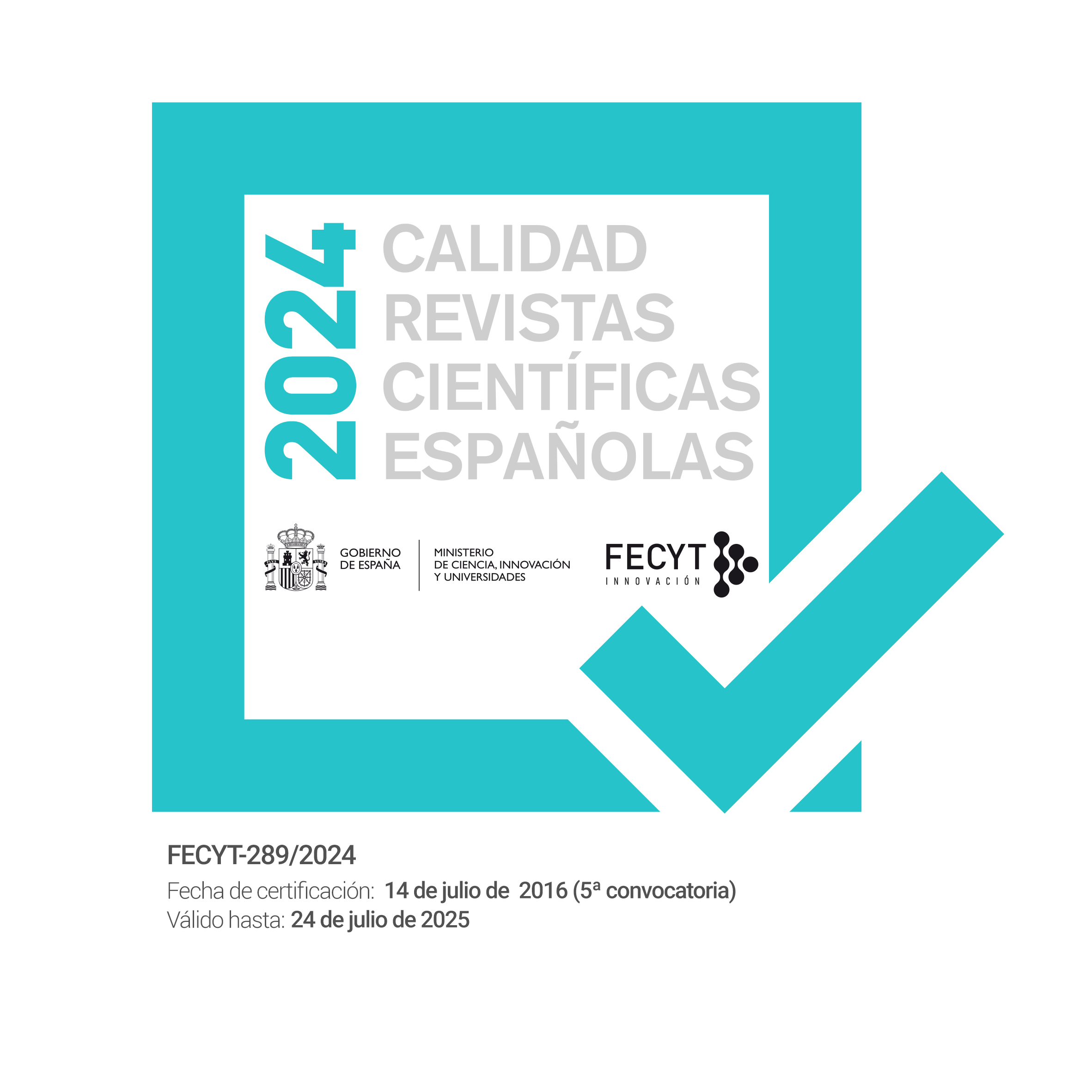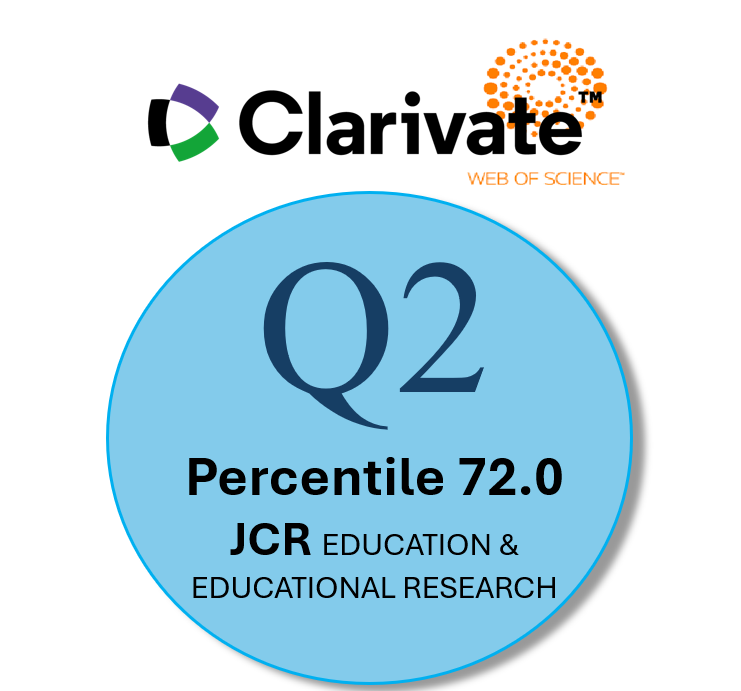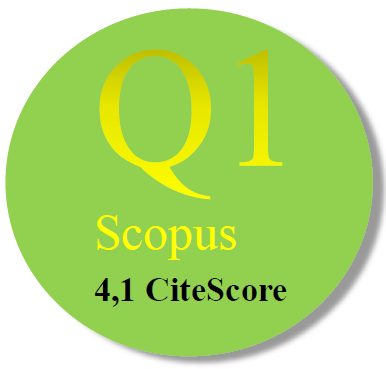The use of video tutorials in the post-COVID19 era: assessment and influence on the development of the teaching identity of the future education professional
Abstract
Due to the COVID19 pandemic, in the 2019-2020 school year in many countries, the classroom activity had to be suspended in any of its manifestations, having the teachers to plan and develop a new process of virtual teaching-learning. In view of this circumstance and in light of the current uncertainty, technological resources become an ally for teachers, making it necessary to disseminate experiences such as the one collected in this study: the use of video tutorials in higher education. From a pre-experimental research design, after applying an electronic questionnaire to 240 students, the planning and implementation of video tutorials for the transmission of theoretical and practical contents in Research Methodology subjects is analyzed. The assessments made show a high level of acceptance of the resource, especially for: analyzing and reflecting on the contents; solving practical problems and organizing the study. Likewise, the relationship between the perception of the usefulness of the video tutorial and the intention of future use is reflected. The study is concluded by highlighting the educational potential of the use of video tutorials in distance higher education
Downloads
-
Abstract3984
-
PDF (Español (España))2264
References
Allen, J., Rowan, L., & Singh, P. (2020). Teaching and teacher education in the time of COVID-19. Asia-Pacific Journal of Teacher Education, 48(3), 233-236. https://doi.org/10.1080/1359866X.2020.1752051
Ajzen, I., & Fishbein, M. (1980). Understanding attitudes and predicting social behavior. Prentice-Hall.
Basto, M., & Pereira, J. M. (2012). An SPSS R-Menu for Ordinal Factor Analysis. Journal of statistical software, 46(4).
Cabero, J., & Valencia-Ortiz, R. (2021). Y el COVID-19 transformó al sistema educativo: Reflexiones y experiencias por aprender. IJERI: International Journal of Educational Research and Innovation, 15, 217-227. https://doi.org/10.46661/ijeri.5246
British Educational Research Association. (2018). Ethical guidelines for educational research (fourth edition). https://www.bera.ac.uk/researchers-resources/publications/ethical-guidelines-for-educational-research-2018
Cahapay, M. B. (2020). Rethinking Education in the New Normal Post-COVID-19 Era: A Curriculum Studies Perspective. Aquademia, 4(2), 1-5. https://doi.org/10.29333/aquademia/8315
Cohen, J. (1969). Statistical power analysis for the behavioral sciences. Academic Press.
Dassa, L. &, Derose, D.S. (2017). Get in the Teacher Zone: A Perception Study of Preservice Teachers and Their Teacher Identity. Issues in Teacher Education, 26(1), 101-113.
García-Planas, M. I., & Torres, J. T. (2021). Transición de la docencia presencial a la no presencial en la UPC durante la pandemia del COVID-19. IJERI: International Journal of Educational Research and Innovation, 15, 177-187. https://doi.org/10.46661/ijeri.5015
Henry, A. (2016). Conceptualizing Teacher Identity as a Complex Dynamic System. Journal of Teacher Education, 67(4), 291–305. doi:10.1177/0022487116655382
Holt-Reynolds, D. (1992). Personal History-Based Beliefs as Relevant Prior Knowledge in Course Work. American Educational Research Journal, 29(2), 325-349.
Hong, J., Greene, B., & Lowery, J. (2016). Multiple dimensions of teacher identity development from pre-service to early years of teaching: a longitudinal study. Journal of Education for Teaching, 43(1), 84–98. http://doi.org/10.1080/02607476.2017.1251111
Hong, J., Greene, B., Roberson, R., Cross Francis, D., & Rapacki Keenan, L. (2017). Variations in pre-service teachers’ career exploration and commitment to teaching. Teacher Development, 22(3), 408–426. http://doi.org/10.1080/13664530.2017.1358661
Horvath, M., Goodell, J. E., & Kosteas, V. D. (2018). Decisions to enter and continue in the teaching profession: Evidence from a sample of U.S. secondary STEM teacher candidates. Teaching and Teacher Education, 71, 57–65. http://doi.org/10.1016/j.tate.2017.12.007
Izadinia, M. (2014) Teacher educators’ identity: a review of literature. European Journal of Teacher Education, 37(4), 426-441. http://doi.org/10.1080/02619768.2014.947025
Karma, I. G. M., Darma, I. K., & Santiana, I. M. A. (2019). Teaching strategies and technology integration in developing blended learning of applied mathematics subject. International Research Journal of Engineering, IT & Scientific Research, 5(5), 16-25. https://doi.org/10.21744/irjeis.v5n5.726
Kavanoz, S., Yüksel, H. G., & Varol, B. (2017) Evolvement of pre-service language teachers' beliefs through teacher education. International Journal of Progressive Education, 13(1), 119-135.
Kazanidis, I., Pellas, N., Fotaris, P. and Tsinakos, A. (2019), Can the flipped classroom model improve students’ academic performance and training satisfaction in Higher Education instructional media design courses?. British Journal of Educational Technologies, 50, 2014-2027. https://doi.org/10.1111/bjet.12694
Lai, G., Zhu, Z., & Williams, D. (2017). Enhance Students’ Learning in Business Statistics Class Using Video Tutorials. Journal of Teaching and Learning With Technology, 6(1), 31-44. https://doi.org/10.14434/jotlt.v6.n1.21161
Martín, M. D., Jiménez, M. P. & Fernández-Aabascal, E. G. (2000). Estudio sobre la escala de estilos y estrategias de afrontamiento (E3A). Revista electrónica de motivación y emoción, 3(4). http://reme.uji.es/articulos/agarce4960806100/texto.html
Martínez-Abad, F., & Rodríguez-Conde, M. J. (2017). Comportamiento de las correlaciones producto-momento y tetracórica-policórica en escalas ordinales: Un estudio de simulación. RELIEVE - Revista Electrónica de Investigación y Evaluación Educativa, 23(2). https://doi.org/10.7203/relieve.23.2.9476
Martínez-Abad, F., & Hernández-Ramos, J. P. (2017). Flipped Classroom con píldoras audiovisuales en prácticas de análisis de datos para la docencia universitaria: Percepción de los estudiantes sobre su eficacia. En S. Pérez Aldeguer, G. Castellano Pérez, & A. Pina Calafi (Eds.), Propuestas de Innovación Educativa en la Sociedad de la Información (pp. 92-105). Adaya Press. https://dialnet.unirioja.es/servlet/articulo?codigo=6122816
Mateo-Berganza, M., & Lee, C. (2020). Una revolución silenciosa. En M. Mateo-Berganza & C. Lee (Eds.), Tecnología: Lo que puede y no puede hacer por la educación. Una comparación de cinco historias de éxito. (pp. 20-33). Banco Iberoamericano de desarrollo. http://dx.doi.org/10.18235/0002401
Maziriri, E.T., Gapa, P., & Chuchu, T. (2020). Student Perceptions towards the Use of YouTube as an Educational Tool for Learning and Tutorials. International Journal of Instruction, 13(2), 119-138. https://doi.org/10.29333/iji.2020.1329a
Monereo, C., Weise, C., & Alvarez, I. (2013). Cambiar la identidad docente en la universidad. Formación basada en incidentes dramatizados. Infancia y Aprendizaje, 36(3), 323–340. http://doi.org/10.1174/021037013807533043
Murillo-Zamorano, L. R., López Sánchez, J. Á., & Godoy-Caballero, A. L. (2019). How the flipped classroom affects knowledge, skills, and engagement in higher education: Effects on students’ satisfaction. Computers & Education, 141, 1-18. https://doi.org/10.1016/j.compedu.2019.103608
Olmos, S., Martínez-Abad, F., Torrecilla, E. M., & Mena, J. J. (2014). Análisis psicométrico de una escala de percepción sobre la utilidad de Moodle en la universidad. RELIEVE - Revista Electrónica de Investigación y Evaluación Educativa, 20(2), art. 1. https://doi.org/10.7203/relieve.20.2.4221
Palazon-Herrera, J. (2018). Effectiveness and motivation towards the use of video tutorials when learning how to use music software. Cultura y Educacion, 30(4), 663-692. https://doi.org/10.1080/11356405.2018.1514804
Pérez-Gómez, Á. I. (2019). Ser docente en tiempos de incertidumbre y perplejidad. Márgenes Revista de Educación de la Universidad de Málaga, 3-17. https://doi.org/10.24310/mgnmar.v0i0.6497
Reimers, F. M., & Schleicher, A. (2020). A framework to guide an education response to the COVID-19 Pandemic of 2020. OECD. https://globaled.gse.harvard.edu/files/geii/files/framework_guide_v2.pdf
Sánchez-Prieto, J. C., Hernández-García, Á., García-Peñalvo, F. J., Chaparro-Peláez, J., & Olmos-Migueláñez, S. (2019). Break the walls! Second-Order barriers and the acceptance of mLearning by first-year pre-service teachers. Computers in Human Behavior, 95, 158-167. https://doi.org/10.1016/j.chb.2019.01.019
Sang, G., Valcke, M., Braak, J.v., & Tondeur, J. (2010). Student teachers’ thinking processes and ICT integration: Predictors of prospective teaching behaviors with educational technology. Computers & Education, 54(1), 103-112. https://doi.org/10.1016/j.compedu.2009.07.010
Scagnoli, N. I., McKinney, A., & Moore‐Reynen, J. (2017). Video lectures in eLearning. In F. Nafukho, & B. Irby (Eds.) Handbook of research on innovative technology integration in higher education (pp.115-134). IGI Global.
So, H., Choi, H., Lim, W.Y., & Xiong, Y. (2012). Little experience with ICT: Are they really the Net Generation student-teachers? Computers & Education, 59(4), 1234-1245.
Trujillo-Sáez, F., Fernández-Navas, M., Montes-Rodríguez, M., Segura-Robles, A., Alaminos-Romero, F. J., & Postigo-Fuentes, A. Y. (2020). Panorama de la educación en España tras la pandemia de COVID-19: La opinión de la comunidad educativa. Fad. http://doi.org/10.5281/zenodo-3878844
Van der Meij, H., & van der Meij, J. (2014). A comparison of paper-based and video tutorials for software learning. Computers & Education, 78, 150-159. https://doi.org/10.1016/j.compedu.2014.06.003
Yuan, R., Liu, W., & Lee, I. (2019). Confrontation, negotiation and agency: exploring the inner dynamics of student teacher identity transformation during teaching practicum. Teachers and Teaching, 25(8), 1–22. https://doi.org/10.1080/13540602.2019.1688286
- 05-01-2021 (2)
- 18-10-2020 (1)
Copyright (c) 2020 Distance Education Journal

This work is licensed under a Creative Commons Attribution-NonCommercial 4.0 International License.
Las obras que se publican en esta revista están sujetas a los siguientes términos:
1. El Servicio de Publicaciones de la Universidad de Murcia (la editorial) conserva los derechos patrimoniales (copyright) de las obras publicadas, y favorece y permite la reutilización de las mismas bajo la licencia de uso indicada en el punto 2.
2. Las obras se publican en la edición electrónica de la revista bajo una licencia Creative Commons Reconocimiento-NoComercial-SinObraDerivada 3.0 España (texto legal). Se pueden copiar, usar, difundir, transmitir y exponer públicamente, siempre que: i) se cite la autoría y la fuente original de su publicación (revista, editorial y URL de la obra); ii) no se usen para fines comerciales; iii) se mencione la existencia y especificaciones de esta licencia de uso.
3. Condiciones de auto-archivo. Se permite y se anima a los autores a difundir electrónicamente las versiones pre-print (versión antes de ser evaluada) y/o post-print (versión evaluada y aceptada para su publicación) de sus obras antes de su publicación, ya que favorece su circulación y difusión más temprana y con ello un posible aumento en su citación y alcance entre la comunidad académica. Color RoMEO: verde.













